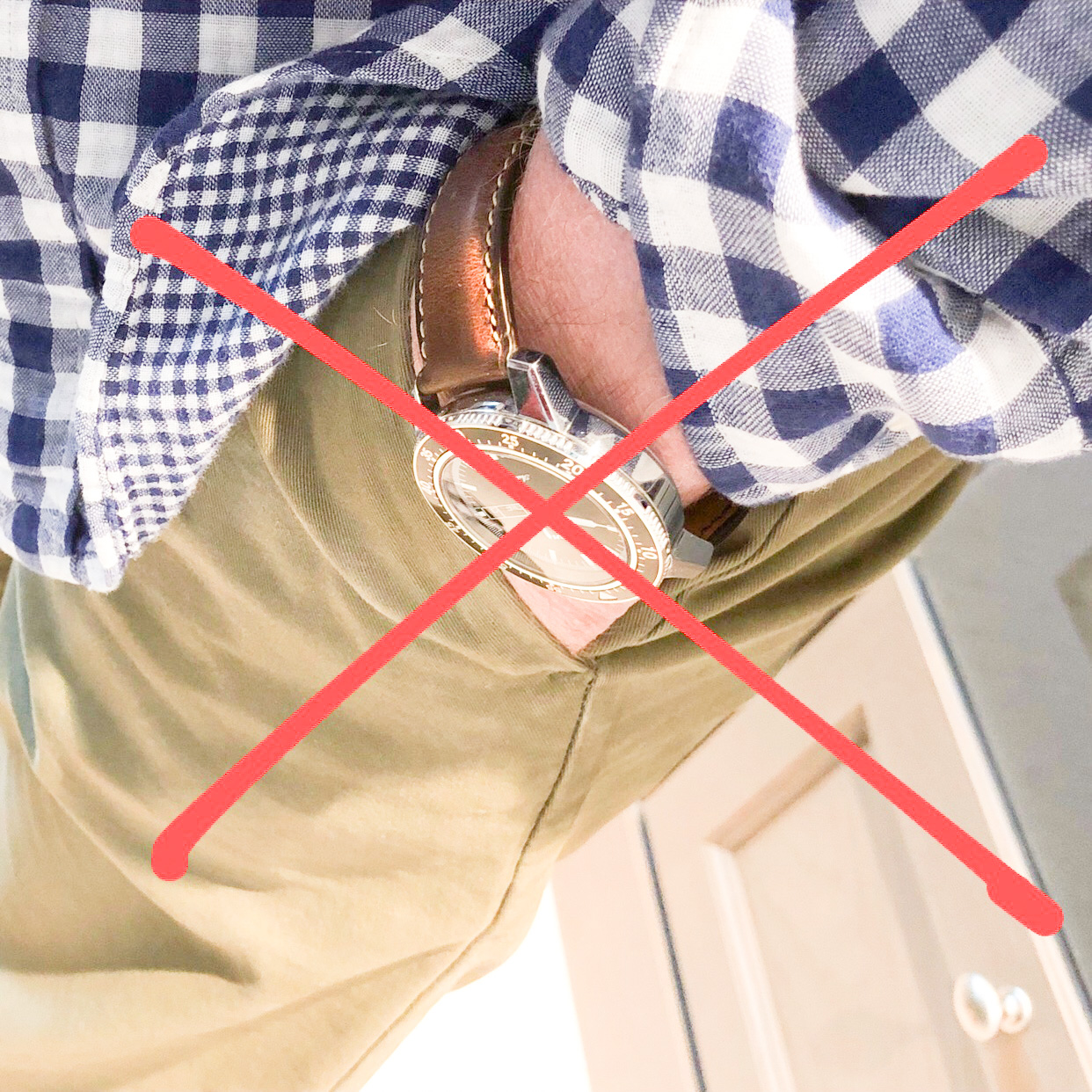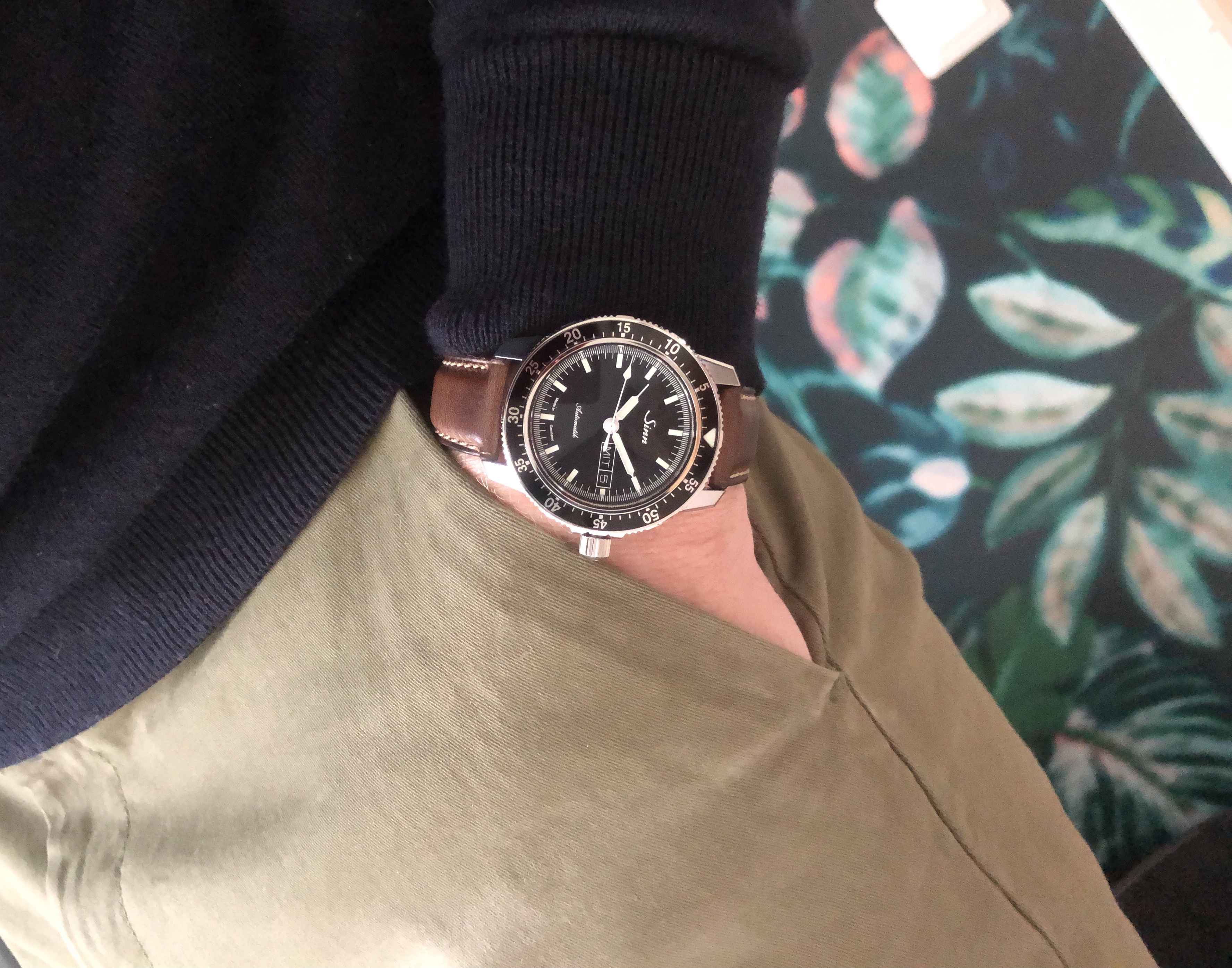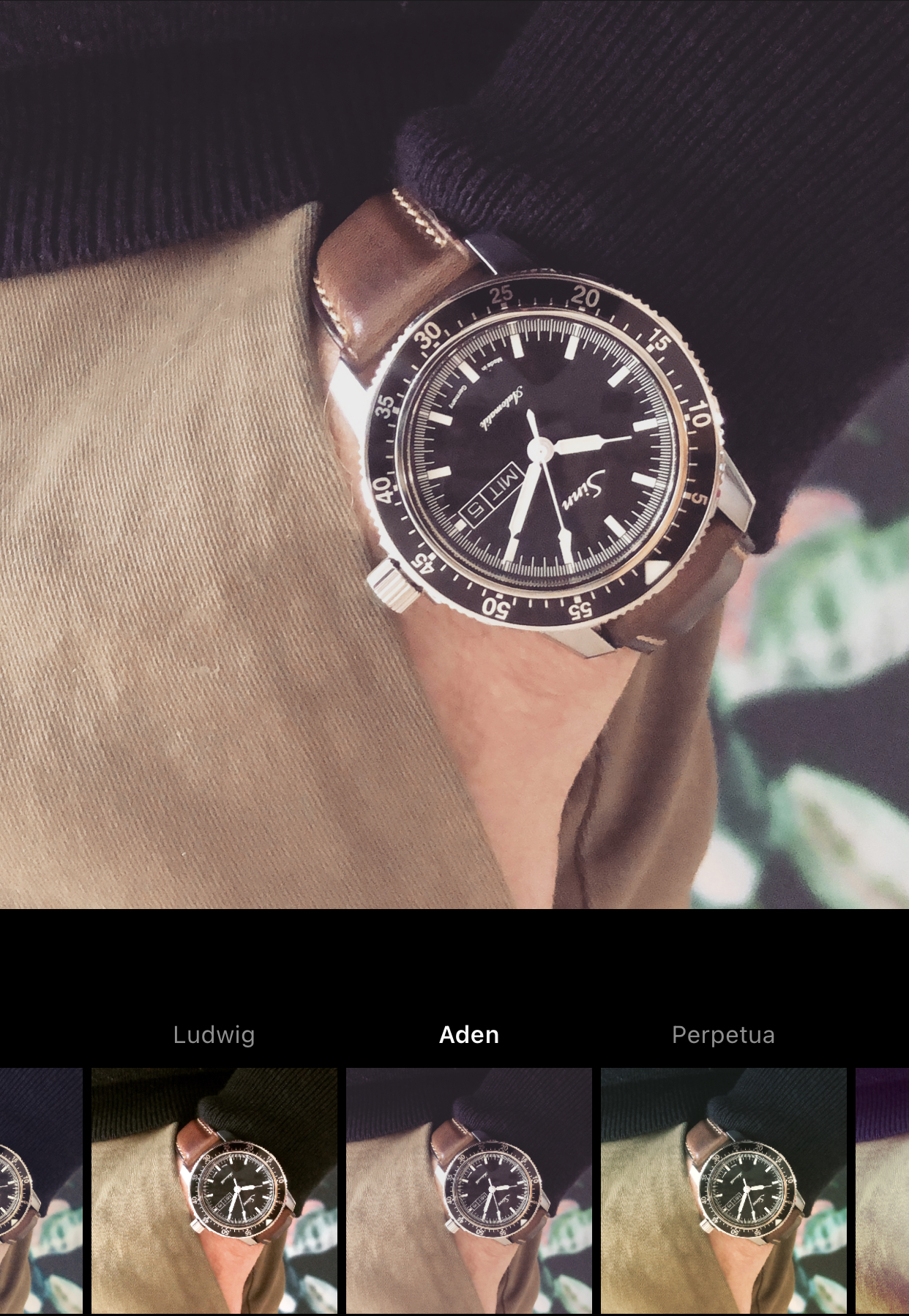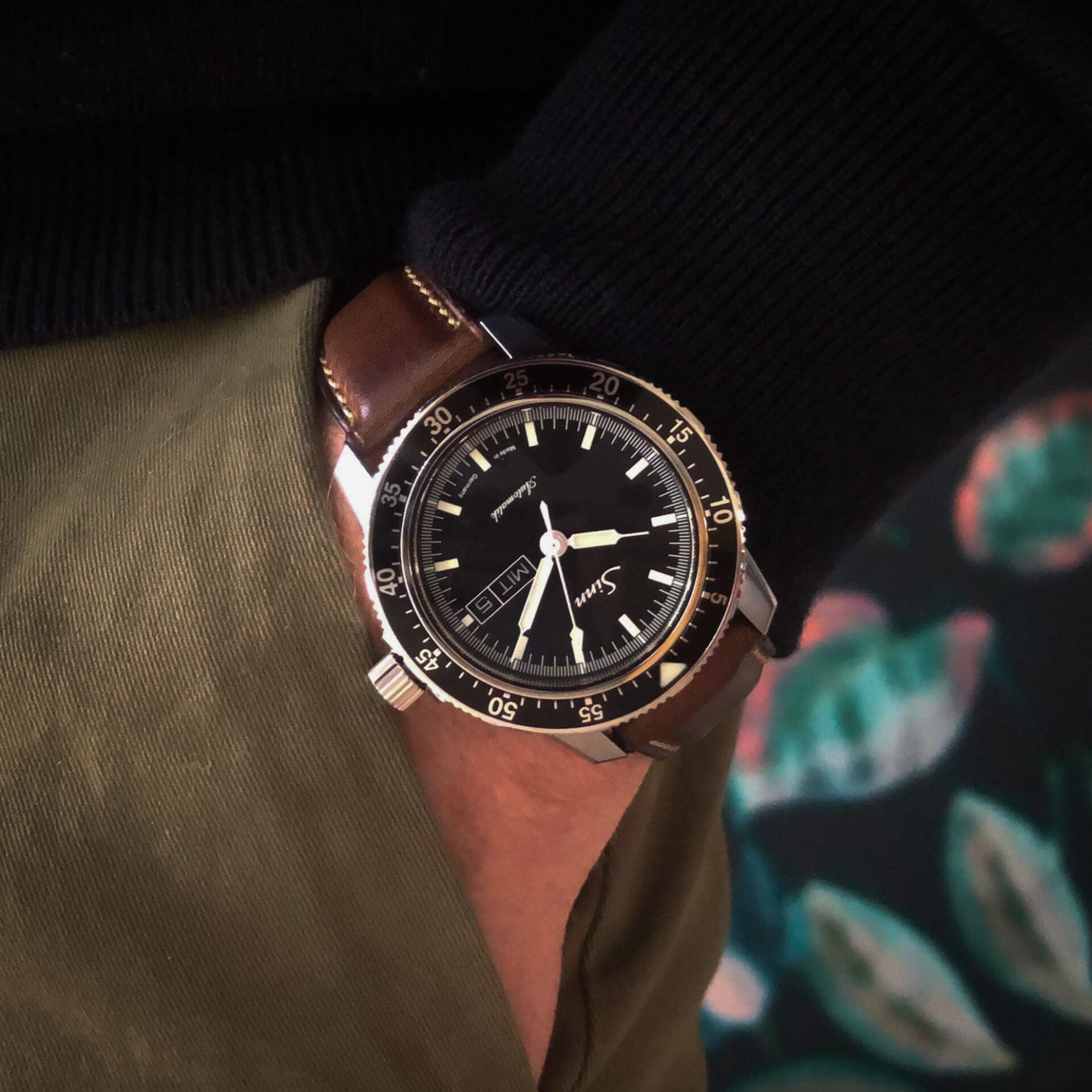Watch photography made easy: How to master the pocket shot
Thor SvaboeIntroduction
Whether it’s flaunting your bling or showing your mates just how good that new tropic strap looks on your Seiko Turtle, there’s no denying that the modern interest in watches is massively fuelled by Instagram, Alongside the wrist roll and the flat-lay shot, one of the most popular depictions is the apparently casual pocket shot. But while the end-result looks simple, twisting your arm with an iPhone upside down is almost impossible unless you’re a contortionist or own a camera stand. In short, there is an art to the humble pocket shot, but armed with these simple techniques and your trusty phone, you’ll be taking pin-sharp close-ups in no time.
The First One
If you think this shot (below) might be unworthy of Instagram then, well, you’re probably right. But it’s easy to make amends, just get your favourite watch out and follow these tips…

1. Clean the camera lens and the watch, as self-evident as it sounds. Use your shirt sleeve, inside pocket or whatever, but this is crucial. Clean the watch and make sure your clothes are free from dog hairs and any crumbs from that cheese and pickle sandwich you wolfed down for lunch.
2. Avoid showroom lighting, direct desk lighting and sunlight. You will struggle with annoying reflections, and keeping the colours true. Direct sunlight, while making you feel all warm and fuzzy inside, can kill any shot. Go outside (best!), or by a window and stay away from direct rays – a bright overcast day is ideal. And never, ever, ever use the flash, whatever you do. Just don’t. Turn it off permanently.
3. Use the self timer on a 3 or 10 second setting, so you can concentrate on holding the phone steady and finding the best angle as it’s counting down. Even a small movement by pressing the button might bugger up a perfect shot. Don’t worry if it’s wonky, as long as the watch is seen head on.
Second attempt

This is how good a simple phone snap can be with no filters applied. If you can persuade a mate or your partner to shoot, do it, and remember this: you know that family picture where you have your eyes closed and your sister is sticking her tongue out? A good photographer keeps maybe 10% of his shots as usable material, so take at least 6-8 shots to end up with a good one (and yes, this will also applies for family snaps to avoid that one where your nan is picking her nose). Now just edit and crop the picture to get the right angle and lose any distractions like that light switch on the wall. Keep the watch centered.
Apps or Instagram filters?

The standard filters on Instagram are great from popping colours through to arty monochrome. Use them! For a good composition in the shot, try to get the watch dial vertically central – though feel free to experiment. For this edit, the watch is moved slightly to the right, but vertically centered on the dial. Have a go, and pop those colours, here shown with the Aden filter to give you a calm elegant look. Having the hands at 10:10 is not obligatory in any watch shot, but it makes sure all text and date windows on the dial are fully visible.
Other apps?
Lightroom is Adobe’s easy version of Photoshop, and the free version does a lot. Download it and try the presets, like this shot where I’ve used the creative preset choice of “cool matte”, with the heaviest setting for vignetting. You’ll get that dark, mood-cool vibe with a lighter centre focus, but just keep experimenting – it’s the only way to improve.
A proper camera, is it worth it?
Well, if you find out you really enjoy this, there’s no better way to shoot high-resolution pictures, especially if you want to expand your horizons beyond watches. The best way is to check a few reviews, and get a second-hand compact camera for $300-400 AUD. Make sure it has a Bluetooth or WiFi function that’s easy to use. This will allow you to remotely shoot using your mobile as a viewfinder and transfer the shots to your phone or iPad. The crispness, colour saturation and depth of vision is on another level if you take the time, and there are lots of great auto-programs to help you.

A step up from a fixed lens compact, is the Micro Four Thirds system from Sony, Lumix or Olympus. I’ve been shooting with an Olympus OMD, and now a Lumix GX9, with practice you’ll get close to full-format quality, with the light weight and size of a compact and interchangeable lenses. This suited-up party shot has my camera perched on a bar stool, using WiFi to focus and shoot remotely with my iPhone, which is cheekily included in the shot as a prop.
So now it’s up to you. By the time we run the next story in this series, you might be a pocket-shot Influencer with a lucrative sponsorship.






